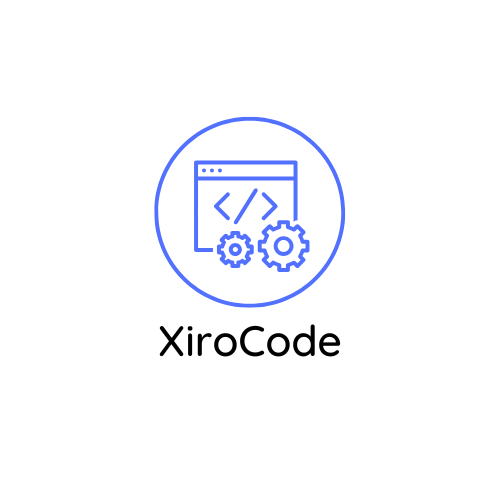In the fast-paced world of software development, project management isn’t just a fancy title—it’s the secret sauce that keeps everything from going haywire. Picture this: a team of brilliant developers, each with a million ideas, but without a roadmap. Chaos ensues, deadlines are missed, and coffee consumption skyrockets. That’s where effective project management struts in like a superhero, cape and all, ready to save the day.
Mastering project management can transform a group of tech geniuses into a well-oiled machine. It aligns goals, streamlines communication, and ensures that everyone’s on the same page—preferably not the “what page are we on?” page. Whether you’re a seasoned pro or just starting out, understanding the nuances of project management in software development can elevate your projects from “meh” to magnificent. Get ready to dive into the essentials that’ll keep your projects on track and your team smiling.
Project Management for Software Development
Project management in software development focuses on organizing, planning, and executing projects to achieve specific objectives efficiently. It incorporates various methodologies, including Agile, Scrum, and Waterfall, each offering unique benefits tailored to diverse project needs. Teams utilize these frameworks to enhance collaboration, improving communication among developers, stakeholders, and customers.
Key components of project management entail scope definition, task allocation, and timeline establishment. Clear requirements provide direction, facilitating better understanding among team members. Tasks are assigned based on individual strengths, ensuring optimal productivity. Establishing a realistic timeline allows teams to prioritize effectively, avoiding unnecessary delays.
Risk assessment remains crucial in project management. Identifying potential issues early on helps teams develop strategies to mitigate them, minimizing disruptions. Regular progress monitoring maintains project transparency and fosters accountability. Daily stand-up meetings or weekly reviews serve as platforms for sharing updates and fielding concerns.
Agile methodologies emphasize iterative progress and adaptability. This approach encourages frequent reassessment of project goals, enabling teams to respond to changes promptly. Engaging stakeholders throughout the process enhances visibility and promotes alignment with client expectations.
Embracing effective project management tools further streamlines workflows. Software applications like Asana, Trello, or JIRA automate task tracking and facilitate better communication, increasing overall efficiency. These systems contribute to a healthier work environment, allowing team members to focus on their objectives without unnecessary distractions.
Ultimately, strong project management transforms software development efforts into coordinated actions. By prioritizing communication, organization, and adaptability, teams elevate their performance, driving successful project outcomes.
Key Principles of Project Management

Effective project management hinges on a few key principles that guide teams through the complexities of software development. Focusing on clear objectives and tailored strategies plays a crucial role in driving project success.
Project Scope Definition
Project scope definition sets clear boundaries for what a project entails. It encompasses goals, deliverables, and tasks, ensuring everyone shares the same understanding of expectations. Engaging stakeholders during this phase facilitates aligning the project’s objectives with their needs. Documenting the requirements effectively minimizes scope creep, enhancing productivity. Specific examples of deliverables might include software features, user documentation, or testing protocols. By establishing a well-defined scope, teams reduce ambiguity, leading to smoother transitions throughout the project lifecycle.
Time Management Techniques
Time management techniques significantly impact project efficiency. Utilizing methods like the Pomodoro Technique or time blocking aids in maximizing productivity among team members. Setting deadlines for tasks creates accountability and encourages timely completion. Regular time audits can reveal areas for improvement, optimizing workflow. Additionally, employing project management tools such as Gantt charts helps visualize task progress and timelines. By maintaining focus on time management, teams can better navigate overlapping responsibilities and ensure milestones are met.
Cost Estimation Strategies
Cost estimation strategies ensure project budgets remain realistic and achievable. Utilizing techniques such as bottom-up estimating provides a detailed breakdown of expenses, fostering accurate forecasting. Involving team members in the estimation process encourages diverse input and increases accountability. Tracking expenditures throughout the project aids in identifying potential cost overruns early. Additionally, comparing actual costs to estimates promotes learning for future projects. By applying effective cost estimation, teams can mitigate financial risks and allocate resources wisely.
Common Methodologies in Software Development

Several methodologies guide software development projects, each with its unique approach and strengths. Understanding these methodologies helps teams choose the right one for their specific projects.
Agile Methodology
Agile methodology emphasizes flexibility and collaboration. Teams work in iterative cycles, allowing for frequent reassessment and adaptation of plans. Active stakeholder involvement fosters continuous feedback, ensuring that the final product aligns closely with user needs. Agile’s iterative nature helps identify issues early, reducing the risk of major setbacks. Popular frameworks within Agile include Scrum and Kanban, which offer structured yet adaptable workflows.
Waterfall Model
Waterfall model follows a linear, sequential approach to project management. Each phase, such as requirement analysis, design, implementation, testing, and maintenance, must be completed before moving to the next. This clarity makes it easier to manage tasks and track progress. However, inflexibility can create challenges if requirements change after the initial phases. The Waterfall model suits projects with well-defined requirements, where changes are minimal throughout the development process.
Scrum Framework
Scrum framework provides a structured approach within Agile methodology. Small, cross-functional teams work in time-boxed iterations called sprints. Typically lasting two to four weeks, these sprints focus on delivering increments of the product. Daily stand-up meetings promote accountability and quick issue resolution. Defined roles, such as Scrum Master and Product Owner, help clarify responsibilities while enhancing communication. This framework allows teams to adapt to changing requirements while maintaining a clear focus on project goals.
Tools and Software for Project Management

Effective project management for software development relies on the right set of tools. These resources enhance organization, streamline workflows, and boost team collaboration.
Collaboration Tools
Collaboration tools significantly improve communication among team members. Platforms like Slack and Microsoft Teams facilitate real-time discussions, file sharing, and project updates. Users can create dedicated channels for specific projects, fostering focused discussions. Additionally, Google Workspace allows teams to collaborate on documents, spreadsheets, and presentations simultaneously. This instant access promotes transparency and encourages teamwork, making it easier to align goals and track progress.
Tracking and Reporting Software
Tracking and reporting software provides essential insights into project status. Tools like JIRA and Asana enable teams to monitor task completion, deadlines, and overall progress. Visual boards clarify workflows, helping teams prioritize tasks effectively. These systems also offer reporting features that generate analytics, allowing managers to analyze performance and identify bottlenecks. Regular updates ensure stakeholders remain informed, creating a culture of accountability within the team.
Best Practices for Successful Project Management
Effective project management hinges on several core practices that enhance the chances of success. Prioritizing clear communication and risk management strategies proves essential.
Effective Communication
Establishing open communication channels fosters a collaborative atmosphere. Regular check-ins keep everyone aligned and informed about project progress. Utilizing tools like Slack or Microsoft Teams allows for real-time dialogue, enabling quick resolutions to arising issues. Feedback loops, through structured meetings or informal discussions, promote engagement and ensure team members feel heard. Integrating visual aids, such as charts and prototypes, helps clarify complex ideas and maintains stakeholder involvement. Clear documentation of meetings and decisions supports accountability and minimizes misunderstandings.
Risk Management Strategies
Identifying potential risks early significantly reduces the chance of project disruption. Conducting a thorough risk assessment helps highlight vulnerabilities in the project timeline or resource allocation. Implementing a risk management plan allows teams to prioritize issues based on their potential impact. Regularly revisiting and updating this plan ensures teams adapt to new challenges as they arise. Developing contingency plans prepares teams for unexpected hurdles, maintaining project momentum. Engaging stakeholders in risk discussions allows for broader perspectives, further strengthening the overall strategy.

